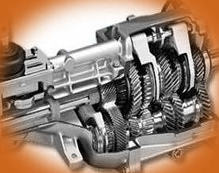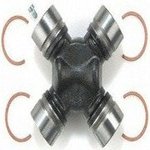
This is the manual drive trains section of the you fix cars website. Although this is one of the latest educational modules offered here, this area is continuing to grow with new articles.
Below you’ll find problem specific articles about the different areas falling under the category of manual power-train and attaching components. Most of the items covered in depth, relate to transferring power from the engine to the drive wheels using a manual transmission instead of an automatic one.
Both rear wheel drive and front drive systems are discussed. Helpful detailed articles that review basic operation and diagnosis of clutches, manual transmission and trans-axles, drive axles, differentials, as well as CV joints are posted below. Common problems such as slipping clutches, noise diagnosis and issues with systems like hydraulic operated clutches are also included.
What is a Manual Drive System
Manual drive trains perform the important task of sending the power produced by the engine directly to the drive wheels in an orderly and efficient manner.
A conglomeration of gear sets and shafts change the ratio of power and speed between the engine and its drive axles. In the case of manual transaxles and transmissions the flow of this power is controlled with precision by the driver through a manually operated shift lever and clutch pedal assembly.
Pinpointing the problems associated with these systems will also be discussed in the articles below. I find diagnosing problem areas such as unusual noises or improper operation can become much easier with a knowledge of how these things work. Give this helpful auto repair resource page a bookmark or share with a friend. Then come back to see new articles on this subject.
Manual Transmission Articles
Remember: If the content below doesn’t solve your problem, the YouFixCars.com Website offers inexpensive car repair help. This first page about clutches shows what the individual parts look like. It also focuses on throwout bearing noise and basic clutch operation. Now you know how a clutch works lets see the difference between manual and hydraulic systems. This is key for proper clutch diagnosis. The final page in the clutch series of articles is about binding clutches and the most common issue, the slipping clutch problem.
Standard shift transmissions for the most part are very reliable. But some issues can take the fun out of driving. Examples of problems and things to check are listed on this next page about manual transmission problems. Often when drivers hear noise coming from there manual drive trains they think that major repairs are on the way. They might be right but here are a few minor issues that can cause major transmission noise. The next page talks about diagnosis of noises from front wheel drive shafts. You can also grab boot kits and special tools for servicing CV joints. Sometimes it just makes sense to replace the whole front wheel drive shaft. Here are a few tips and tools to make the job easier. You can also get some idea about cost for a new CV shaft.

What about universal joints on rear wheel drive and 4×4 trucks. If you plan on altering the driveshaft angle by installing a lift kit take a look at this page about driveshaft u-joints. In a rear wheel drive situation the final drive can cause issues as well. My truck has a positraction set up that requires special fluid. See what else can go wrong with a rear differential.
The homepage is up next and provides a good run down on what automotive information can be found here. This next link takes you there from this page about manual drive trains.
When it comes to noise diagnosis in manual drive trains bearing problems can be tough to pinpoint. This article talks about how to isolate noise from rear wheel drive axle shaft bearings Here is a link to a post on my auto repair information blog about a manual transmission problem that was my fault. See how I destroyed my 300ZX manual transmission. Rebuilding manual transmissions is becoming a lost art form. Possessing this skill would be considered job security in my shop. See another post from my blog about interesting manual transmission facts.

